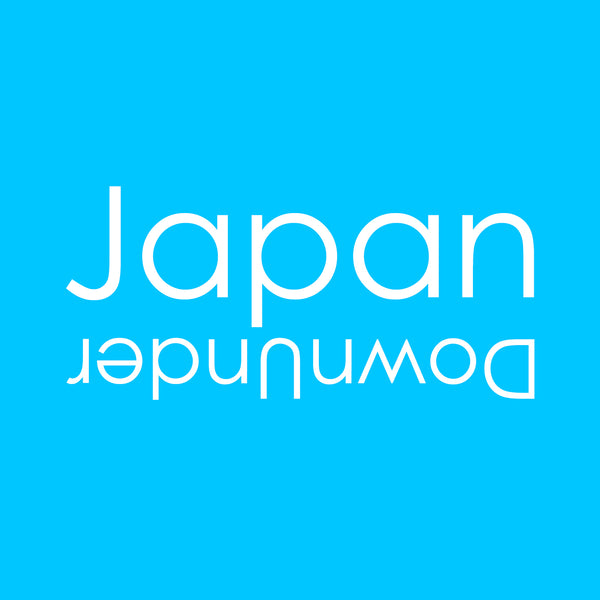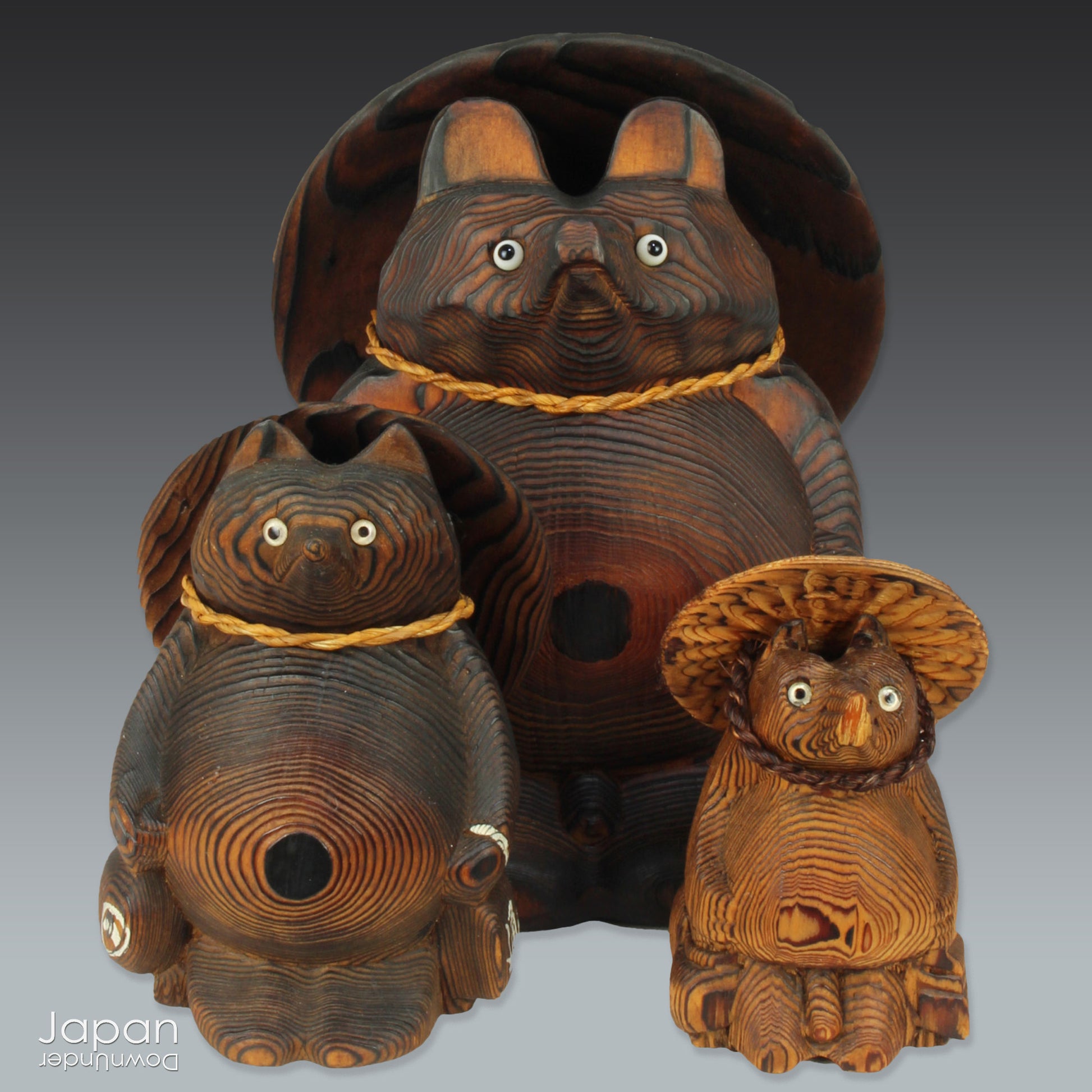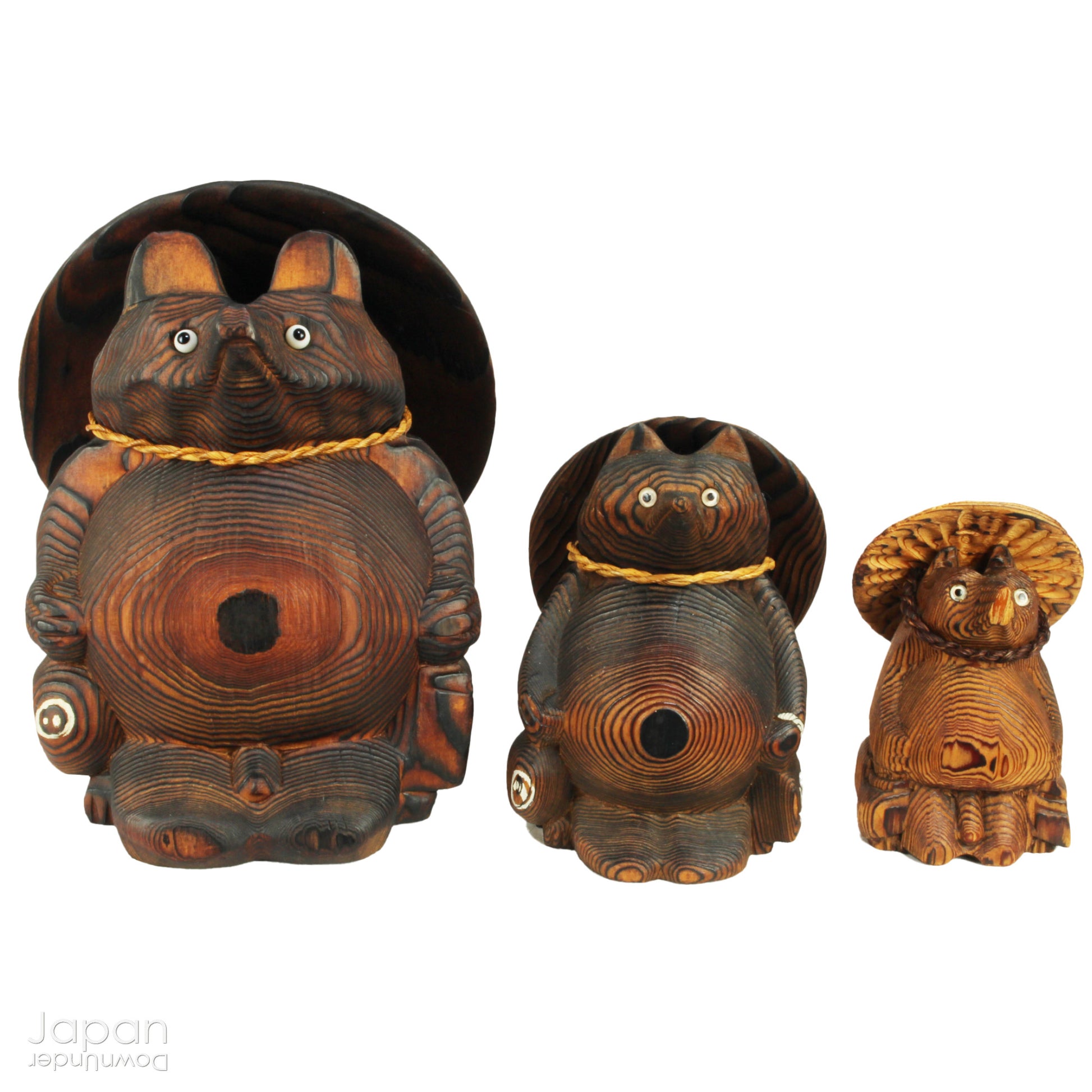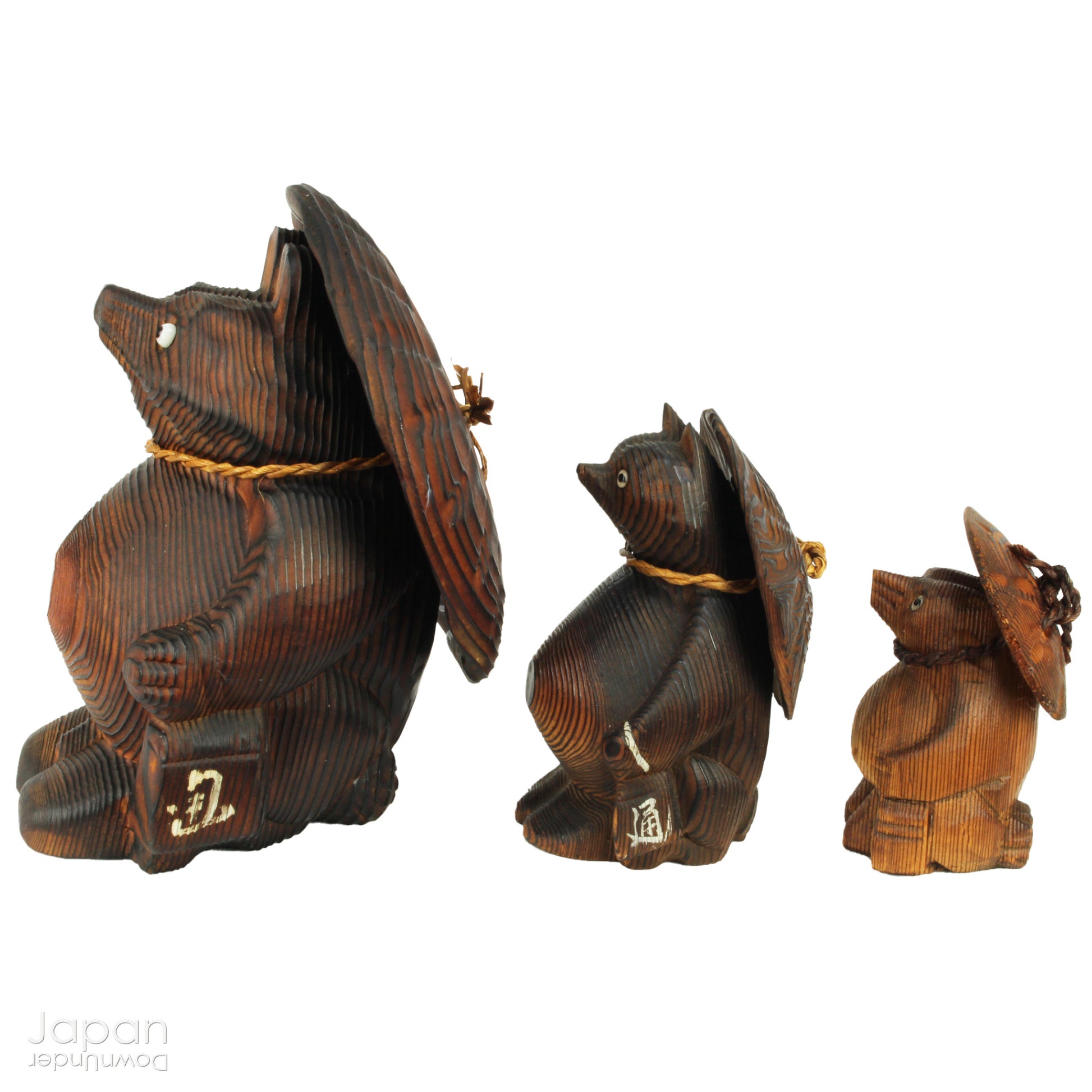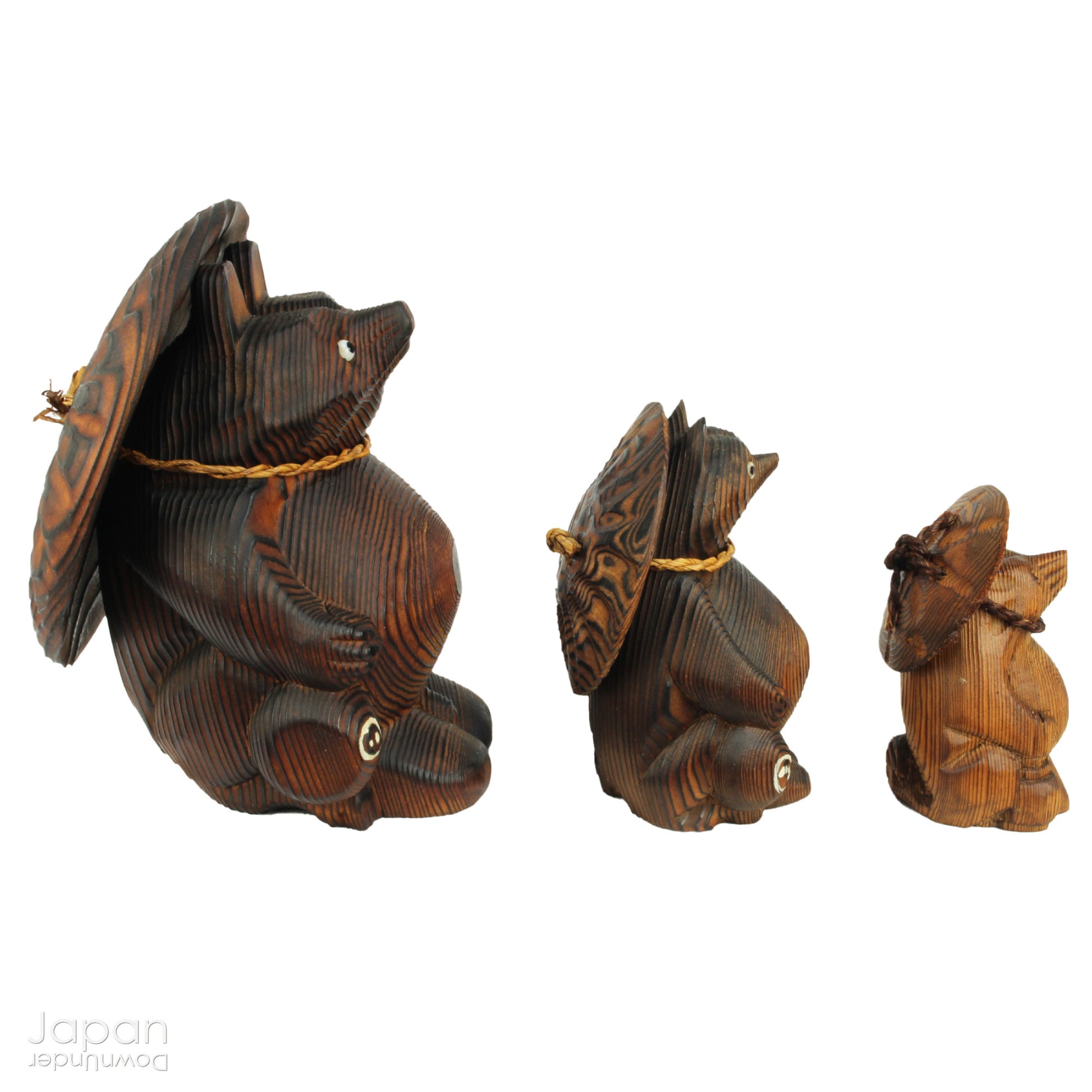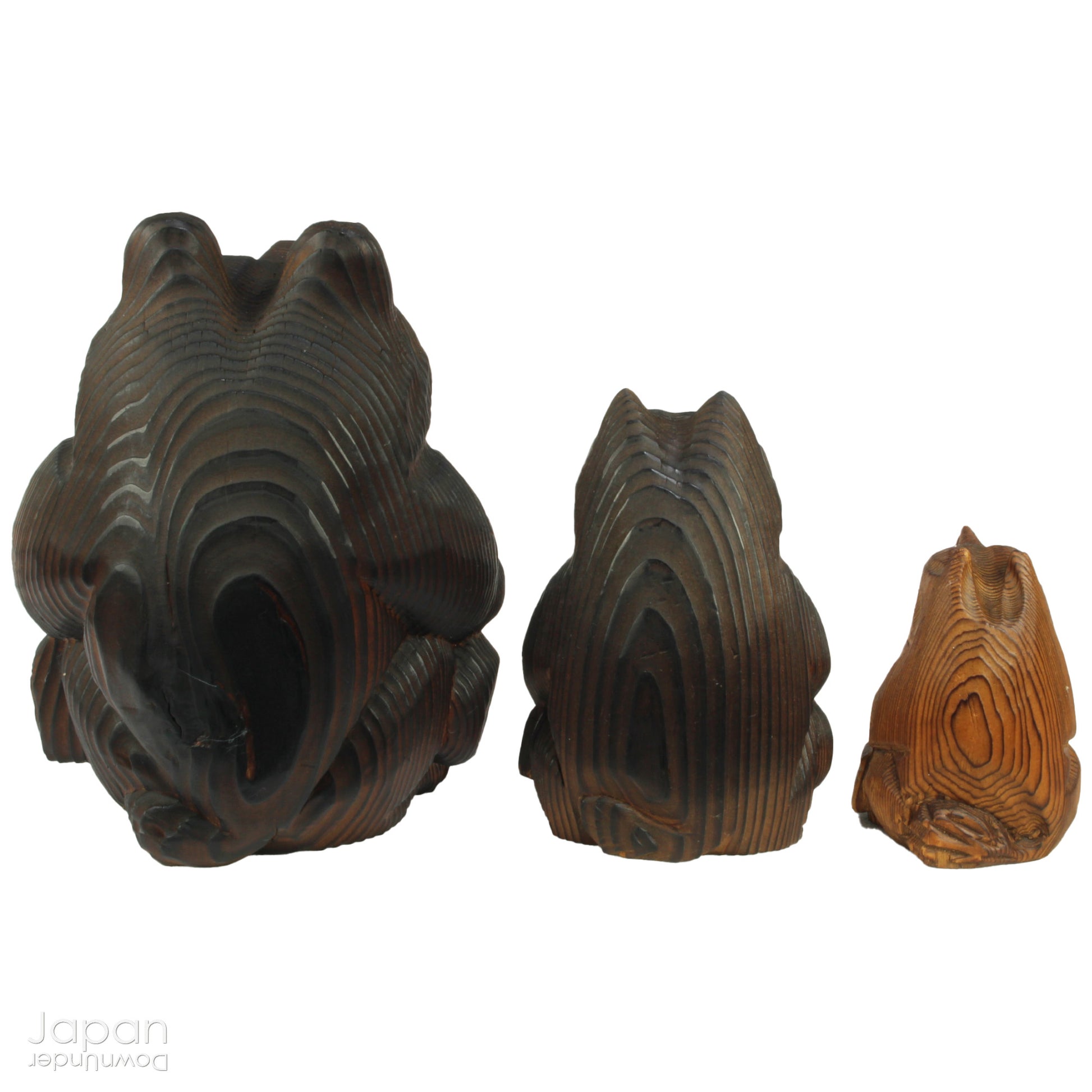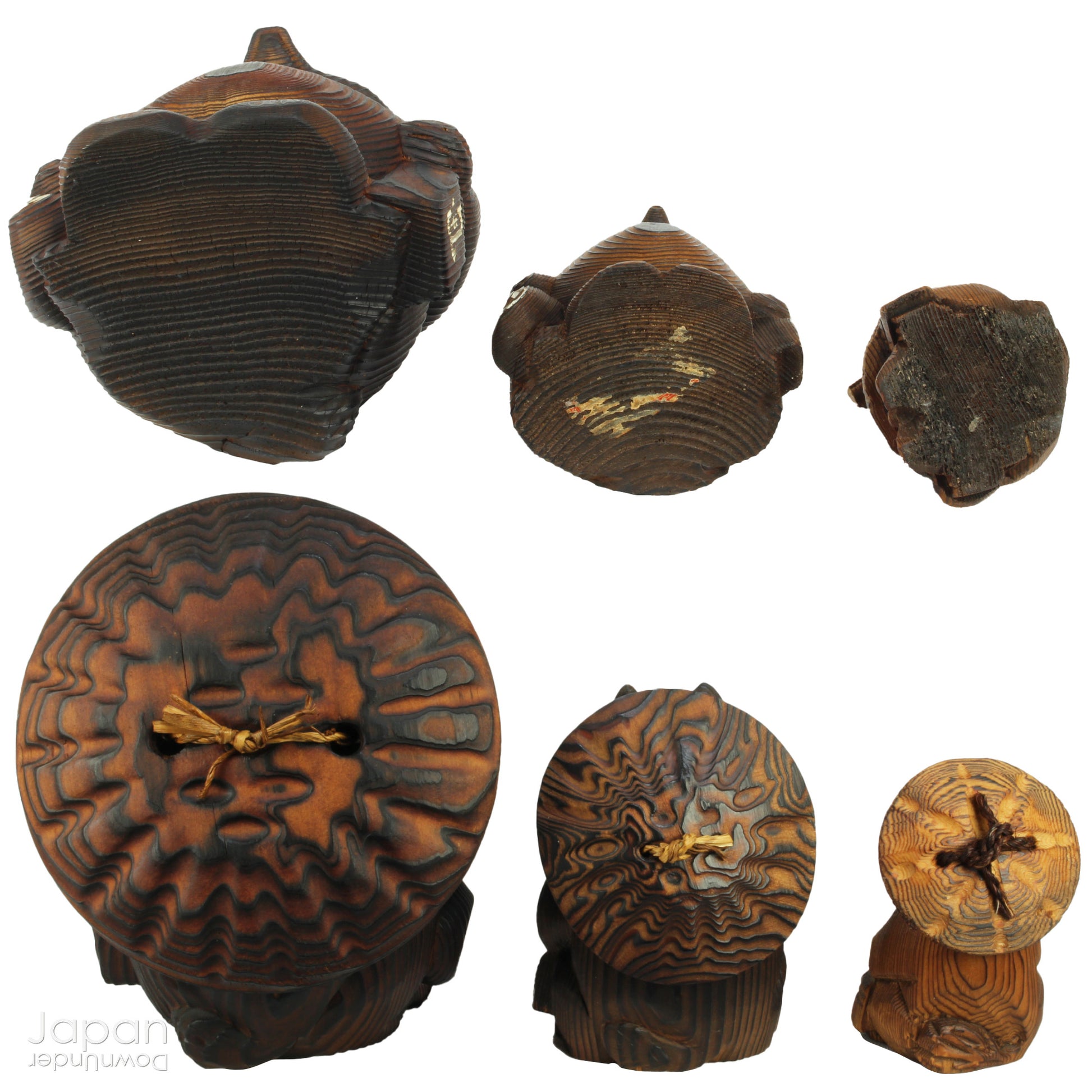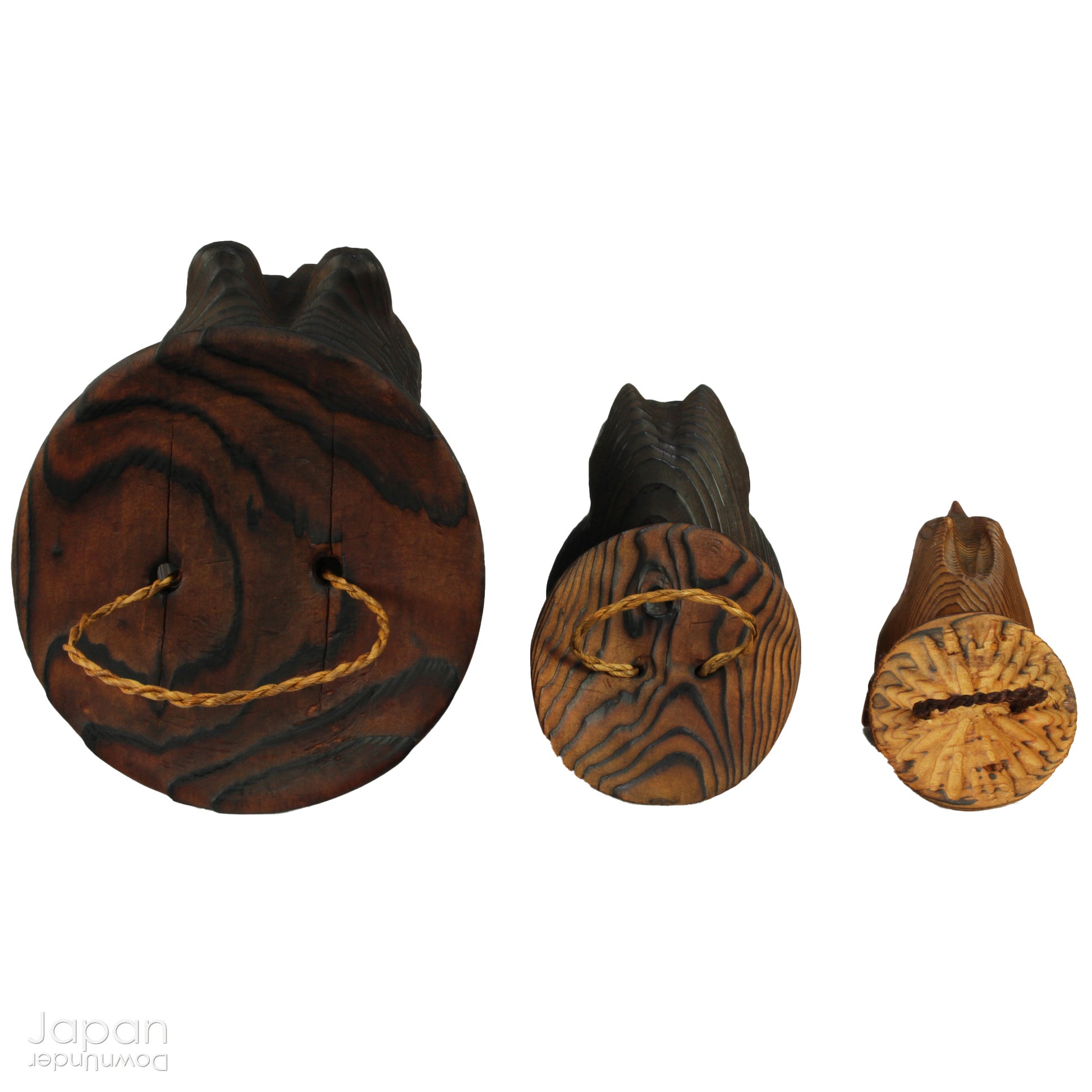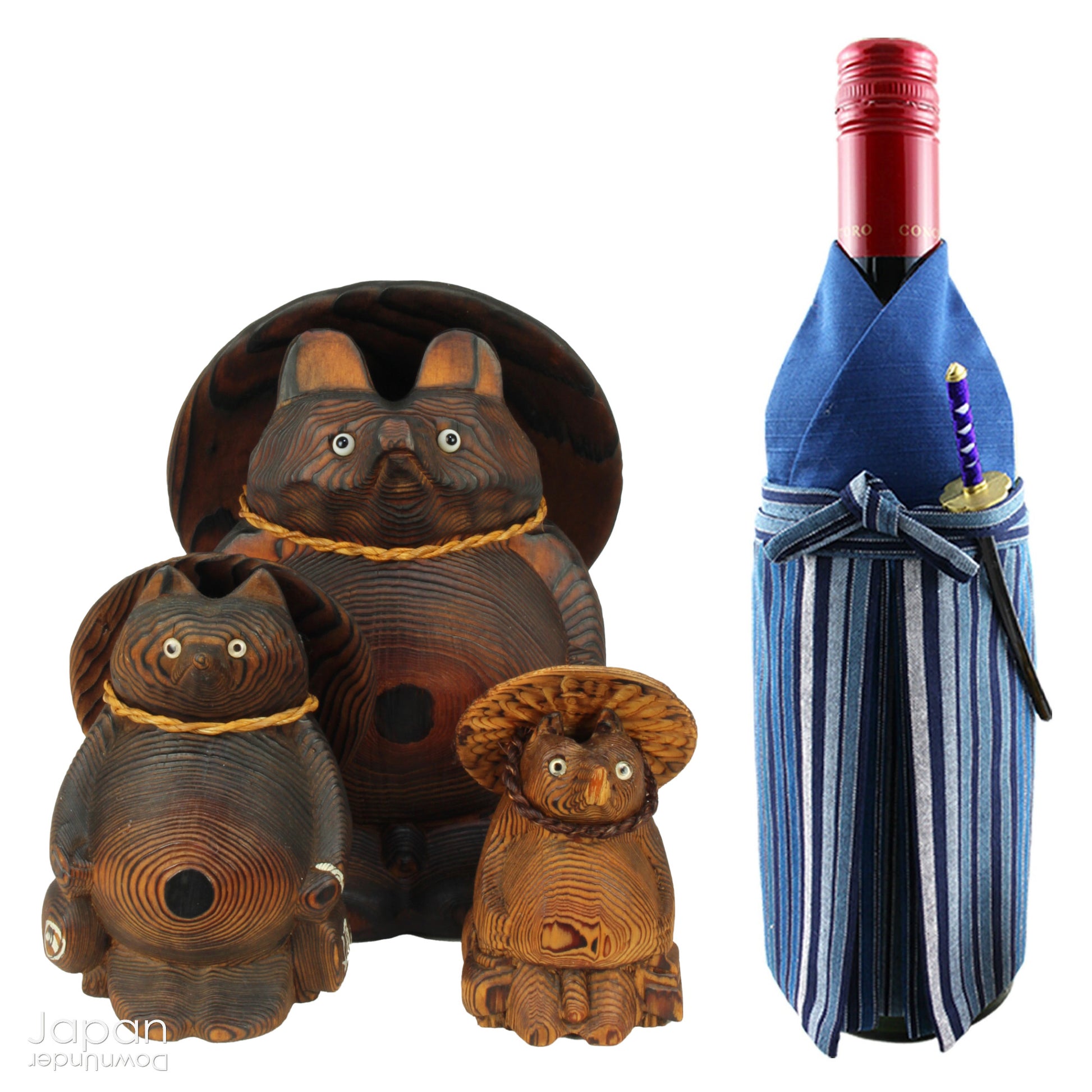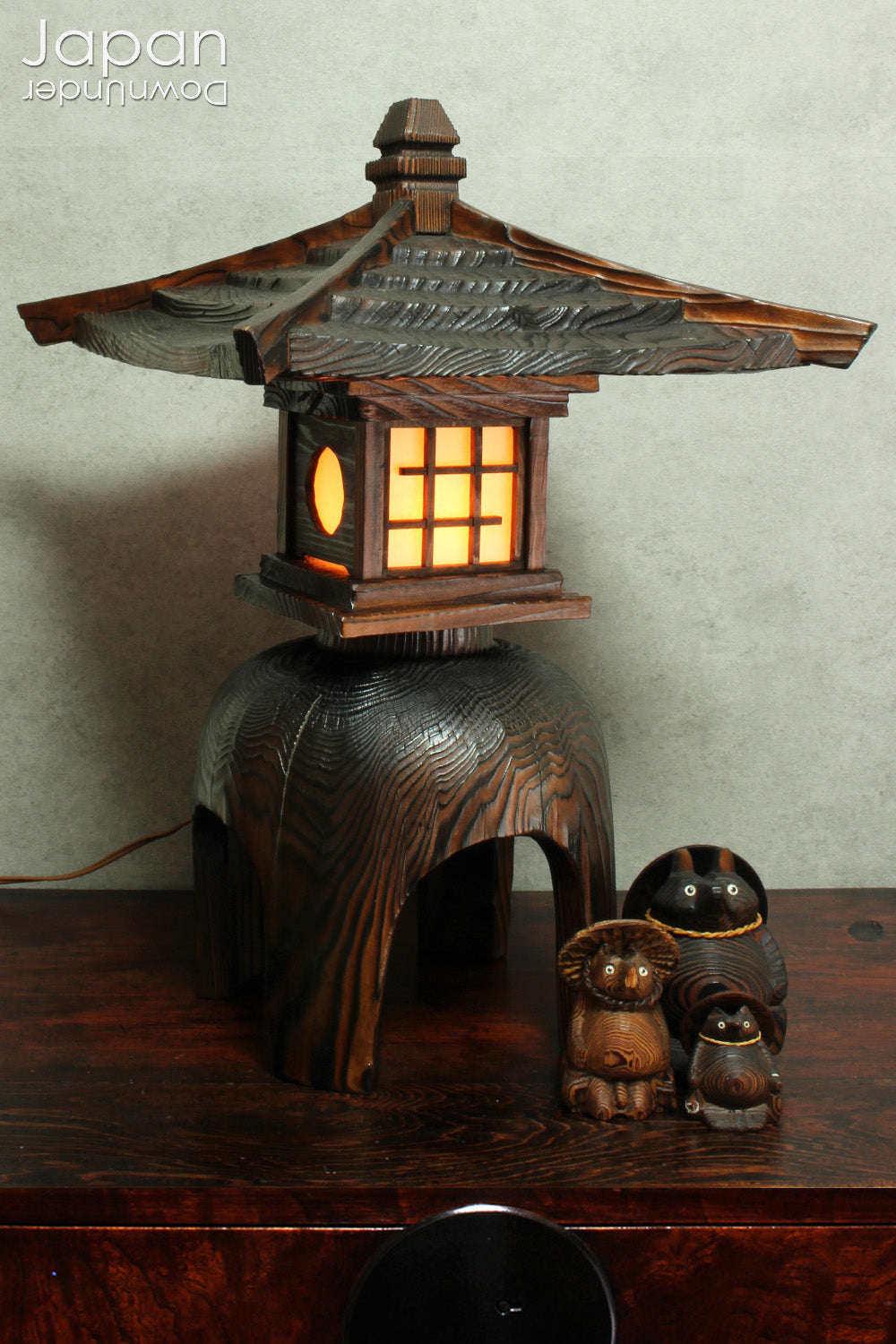JapanDownUnder
antique japanese tanuki wood carvings trio - folk art lucky charms
antique japanese tanuki wood carvings trio - folk art lucky charms
Couldn't load pickup availability
Love Japanese Style Like We Do
Add a dash of charm and cultural richness to your home with this delightful set of three antique Japanese tanuki wood carvings - authentic examples of traditional Japanese folk art, long believed to be bringers of good luck and prosperity.
In Japanese folklore, the tanuki (raccoon dog) is a symbol of fortune and success, especially in business. These cheerful figures are often found standing outside izakayas (Japanese pubs) and restaurants across Japan, beckoning in customers with their mischievous grins and generous bellies.
These particular carvings are truly special. No longer in production, they were originally crafted as souvenirs and sold at hot spring resorts and locations closely associated with the tanuki legend - places like Morinji Temple in Tatebayashi, dedicated to the beloved creature, and Shigaraki, renowned for its ceramic tanuki statues.
Each sculpture is hand-carved from a single piece of naturally fallen sugi (Japanese cypress), showcasing the stunning grain of the wood. Look closely and you'll see how the concentric patterns ripple out from their round navels, highlighting their plump, endearing bellies. No two are exactly alike - their slight stylistic variations reflect the unique hand of each artisan.
With their pointed ears, elongated noses, and full cheeks, these tanuki have real personality. Their expressive glass eyes gaze sweetly upward from their tilted heads, and each one wears a large, removable hat, tied gently around the neck with string.
Faithful to folklore, these figures feature all eight of the tanuki’s auspicious traits:
A big hat (protection from trouble)
A large belly (calm and decisiveness)
A strong tail (stability and strength)
A promissory note (trustworthiness)
A sake flask (virtue)
A giant scrotum (symbol of financial luck)
A cheerful smile (friendliness)
Big round eyes (awareness and ability to make good decisions)
Traditionally, these carvings were made in various sizes - from petite 6 cm (2.3") charms to larger 40 cm (15.7") pieces. In Japan, it’s customary to start with a small engimono (lucky item) and grow your collection each year to increase your good fortune.
This particular set includes figures in different sizes and styles, all in good antique condition. While they bear minor bumps and signs of age consistent with their history, there are no cracks in the wood. Over time, the sugi has developed a beautiful patina, with rich, varying tones that add to their rustic, mingei (folk craft) appeal.
A wonderful addition to any tanuki or Japanese folk art collection - or a perfect, conversation-starting décor piece for your bar or cozy corner.
- measures from tallest to smallest:
- 19 cm (7.5”) tall x 13 cm (5.1”) across x 13 cm (5.1”) deep.
- 13 cm tall (5.1”) x 8 cm (3.1”) across x 8 cm (3.1”) deep.
- 10 cm tall (4”) ) x 6 cm (2.4”) across x 6 cm (2.4”) deep.
- total weight 710 gm.
(listing for collection of three wood tanuki figures only)
SHIPPING INFORMATION
- please read our shipping notes in shipping policy.
- we use recycle packaging wherever possible and wrap for safety, rather than appearance!
ABOUT OUR VINTAGE, ANTIQUE AND OTHER ITEMS
We list pieces we feel are worthy of display. There may be scratches, dents, fading and signs of wear and tear. We try to explain the condition of each item exactly, but may miss something.
Information regarding the item and it’s age is obtained from dealers and our personal research. We do our best to give you the correct information but please be aware that we cannot guarantee this information.
Please message us prior to purchase with any questions you may have about our products.
TANUKI
Tanuki folklore, originating from Chinese fox-lore, often depicts the animals as shape-shifters with supernatural powers and mischievous tendencies. In their earliest malevolent manifestations, Tanuki assumed human form, haunted and possessed people, and were considered omens of misfortune. Many centuries later in Japan, they evolved into irrepressible tricksters, aiming their illusory magic and mystifying belly-drum music at unwary travelers, hunters, woodsmen, and monks. Today, the Tanuki are cheerful, lovable, and benevolent rogues who bring prosperity and business success.
Ceramic statues of Tanuki are found everywhere in modern Japan, especially outside bars and restaurants, where a chubby Tanuki beckons drinkers and diners to enter and spend generously.
The fun-loving Tanuki is commonly depicted with a big tummy, a straw hat, a bewildered facial expression (he is easily duped), a giant scrotum, a sake flask, and a promissory note (that he never pays).
Tanuki has eight special good luck symbols:
1. His big straw hat protects him from bad weather or bad luck falling from the sky, symbolizing being prepared for unexpected trouble.
2. His big belly symbolizes level headedness and composure.
3. His tail symbolizes unflinching determination and perseverance.
4. His promissory notebook symbolizes honesty and gaining the trust of others. The shortened kanji for tsucho (promissory note book), ‘tsu,’ is often written on the front of the book.
5. His smiling face symbolizes kindness and a welcoming attitude.
6. His big round eyes symbolize discernment and making informed, good decisions.
7. His sake flask symbolizes thankfulness for ones’ daily food. Maru (circle) hachi (8), the kanji for number eight written inside a circle, often appears on the sake flask. This circle was actually the family crest of the Tokugawa family in the Edo era, but now reminds us of the eight lucky virtues of the tanuki figure.
8. His giant scrotum, (kinbukuro in Japanese and literally meaning gold bag), symbolizes good luck with money and the spreading of wealth.
Although the Japanese continue to classify Tanuki as a yōkai (monster or spirit), the creature today is no longer frightening or mysterious. Instead, it has shape-changed into a harmless and amusing fellow, one more interested in encouraging generosity and cheerfulness among winers and diners than in annoying humankind with its tricks.
ENGIMONO
Engimono are charms that bring good luck for such things as an abundant harvest, successful business, loving relationships or good health. Engimono are often available at New Year events in shrines and temples. They are also popular souvenirs, bought when travelling to different places in Japan. There is a variety of Engimono in different areas in Japan. These good luck charms have been passed down through history. Some popular engimono are Eto ornaments (the 12 Japanese zodiac animals), Shinobu Goma, a lucky horse for a good harvest from Iwate Prefecture and Aka Beko a red paper mache cow with a swinging head from Fukushima, thought to fend off evil and disease. Some other well known engimono are Daruma, Tanuki, Shisa and Maneki Neko.
Share









